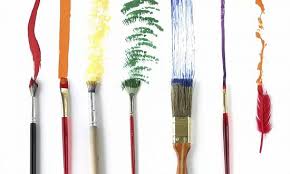oxygen
MASTERPIECES OF PASTEL FROM FUNDS OF THE TREYAKOV GALLERY (part 1)
 The collection of the State Tretyakov Gallery contains about 800 pastels, some were purchased by P.M. Tretyakov.
The collection of the State Tretyakov Gallery contains about 800 pastels, some were purchased by P.M. Tretyakov.
Pastel must be stored under glass. It is very vulnerable: it can fall off from a concussion, all kinds of travels are dangerous for it, it is disastrously affected by direct sunlight, temperature extremes, excessive dryness or humidity. Constant concern for the safety of “loose” pastel works does not allow them to be often and continuously exposed. To see them in the halls of the museum is a rare and significant event.
The word pastel comes from Italian pasta – pasta or pastry. This is the name of the material for drawing, the technique in which the artist works, and, finally, the artwork drawn with pastel pencils. Continue reading
LENINGRAD SCHOOL OF PAINTING (part 3)
 And how to explain such a change of state to “left” art, whose representatives continued to occupy key posts in all the organs of this state, which were in charge of art issues in the center and in the localities?
And how to explain such a change of state to “left” art, whose representatives continued to occupy key posts in all the organs of this state, which were in charge of art issues in the center and in the localities?
Among the supporters of the “left” views, the artists D.P. Sternberg, A.D. Drevin, V.E. Tatlin, V.V. Kandinsky, K.S. Malevich, O.V. Rozanova, M.V. Matyushin, stood out N.I. Altman and others. They formed a rather strong group, which initially determined the artistic policy of the Department of Fine Arts created under the People’s Commissariat for Education, as well as the Moscow and Petrograd Soviets. Continue reading
VLADIMIR SCHOOL SCHOOL SCHOOL (part 1)
 Vladimir landscape painting is a trend that firmly established itself in art in the 1970s and is now included in the treasury of genuine achievements of the Russian national school. For the first time, artists of this region made themselves known after the First Republican Exhibition “Soviet Russia” held in Moscow in 1960, when three artists – Kim Britov, Vladimir Yukin and Valery Kokurin – showed their works, the result of creative searches and experiments.
Vladimir landscape painting is a trend that firmly established itself in art in the 1970s and is now included in the treasury of genuine achievements of the Russian national school. For the first time, artists of this region made themselves known after the First Republican Exhibition “Soviet Russia” held in Moscow in 1960, when three artists – Kim Britov, Vladimir Yukin and Valery Kokurin – showed their works, the result of creative searches and experiments.
In his works, K. Britov frantically studied the techniques of textured writing, looking for a special luminiferous color that conveys the mood. V. Yukin sought to express feelings through the state of nature, V. Kokurin was interested in a light-air environment that changes color and shape of objects. Continue reading




